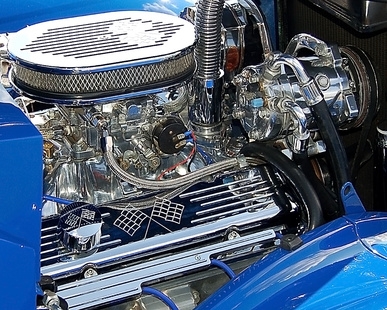
Hot rodders have been boring out and stroking the Chevrolet small block for more than half a century. The largest small block GM ever produced came in at 400 cubic inches; enthusiasts would wring an extra 6 cubic inches out of the block by boring the cylinders 0.030-inch over to produce a 406. However, the 400 had very thin cylinder walls from the factory and boring it out only exacerbated the problem. A modern 406 will require a slightly different approach.
A factory 400 block is the traditional way to go but boring it 0.030-inch over to get 406 cubic inches will net you an engine that makes huge torque when it's not overheating and cracking in two. Remember, the reason that 383 strokers were so popular is that 400 crankshafts were cheap. Those 400 crankshafts were cheap because even factory blocks cracked and overheated, leaving the crankshaft and rods available for sale. So, if you're going to build a modern 406 stroker then use an aftermarket engine block that comes as-cast with at least a 4.125-inch bore and clearance for the required rods.
Factory Vortec heads are perfect for this application. Their excellent low-lift airflow characteristics work well with the extra cubic inches, making for an engine that produces huge torque at idle but flows enough air at high lift to turn out impressive horsepower numbers. Ported Vortec heads flow nearly as well as most aftermarket heads; they're easily capable of supporting over 500 horsepower in this application and are available from many junkyards. Utilizing the Vortec head's steam vent holes will also allow you to run a reverse-flow cooling system to further reduce the possibility of overheating from the thin cylinder walls.
If you do build a traditional 406 from a 400 engine block, do not use nitrous, a supercharger, a turbo or extremely high compression. The thin cylinder walls of the 406 aren't stable enough to safely support very high cylinder pressures, so you'll need to rely on high rpm to get the job done. You'll need the strongest rods and lightest pistons commercially available to reduce the likelihood of breakage at high rpm. A turbo or supercharger is fine if you are using an aftermarket block with very thick cylinder walls; however, if you are going that route, you might as well go for 427-plus cubic inches.